Related Research Articles

A gas mask is a piece of personal protective equipment used to protect the wearer from inhaling airborne pollutants and toxic gases. The mask forms a sealed cover over the nose and mouth, but may also cover the eyes and other vulnerable soft tissues of the face. Most gas masks are also respirators, though the word gas mask is often used to refer to military equipment, the scope used in this article. Gas masks only protect the user from ingesting or inhaling chemical agents, as well as preventing contact with the user's eyes. Most combined gas mask filters will last around 8 hours in a biological or chemical situation. Filters against specific chemical agents can last up to 20 hours.

The use of toxic chemicals as weapons dates back thousands of years, but the first large-scale use of chemical weapons was during World War I. They were primarily used to demoralize, injure, and kill entrenched defenders, against whom the indiscriminate and generally very slow-moving or static nature of gas clouds would be most effective. The types of weapons employed ranged from disabling chemicals, such as tear gas, to lethal agents like phosgene, chlorine, and mustard gas. These chemical weapons caused medical problems. This chemical warfare was a major component of the first global war and first total war of the 20th century. The killing capacity of gas was profound, with about 90,000 fatalities from a total of 1.3 million casualties caused by gas attacks. Gas was unlike most other weapons of the period because it was possible to develop countermeasures, such as gas masks. In the later stages of the war, as the use of gas increased, its overall effectiveness diminished. The widespread use of these agents of chemical warfare, and wartime advances in the composition of high explosives, gave rise to an occasionally expressed view of World War I as "the chemist's war" and also the era where weapons of mass destruction were created.
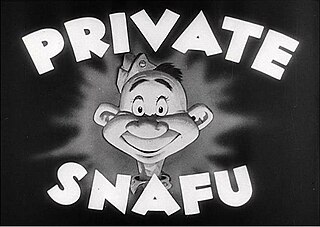
Private Snafu is the title character of a series of black-and-white American instructional adult animated shorts, ironic and humorous in tone, that were produced between 1943 and 1945 during World War II. The films were designed to instruct service personnel about security, proper sanitation habits, booby traps and other military subjects, and to improve troop morale. Primarily, they demonstrate the negative consequences of doing things wrong. The main character's name is a play on the military slang acronym SNAFU, "Situation Normal: All Fucked Up".

The Chemical Corps is the branch of the United States Army tasked with defending against and using chemical, biological, radiological, and nuclear (CBRN) weapons. The Chemical Warfare Service was established on 28 June 1918, combining activities that until then had been dispersed among five separate agencies of the United States federal government. It was made a permanent branch of the Regular Army by the National Defense Act of 1920. In 1945, it was redesignated the Chemical Corps.
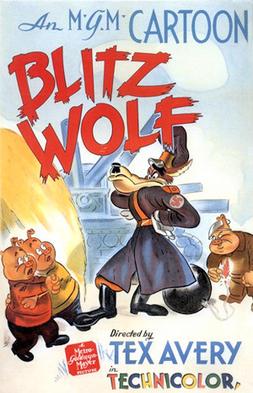
Blitz Wolf is a 1942 American animated propaganda short film produced and distributed by Metro-Goldwyn-Mayer. A parody of the Three Little Pigs told via a World War II perspective, the short was directed by Tex Avery and produced by Fred Quimby. It was nominated for the Academy Award for Best Short Subject: Cartoons but lost to Der Fuehrer's Face, another anti-Nazi World War II parody featuring Donald Duck.

Going Home is part of the Private Snafu series of animated shorts produced by Warner Bros. during World War II. Made in 1944, the 4 minute cartoon features the vocal talents of Mel Blanc and was directed by Chuck Jones. The screenwriters for the Snafu cartoons were typically uncredited, though some animation historians believe that the writer of this short was Dr. Seuss.
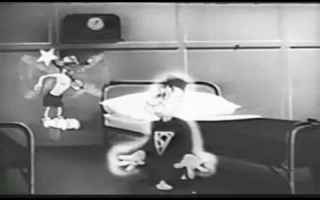
Snafuperman is a 1944 animated short comedy produced by Warner Bros. and directed by Friz Freleng. It is one of a series of black and white "Private Snafu" cartoons created for the Army-Navy Screen Magazine and shown only to American soldiers. The "Private Snafu" cartoons were not released commercially, until December 2010. The cartoon's title is a play on "Superman" and parodies the popular Superman cartoons of the 1940s.

Private Snafu vs. Malaria Mike is an animated short film, directed by Chuck Jones and first released in March 1944. It features Private Snafu facing a malaria-transmitting mosquito.
Of Thee I Sting is a 1946 Warner Bros. cartoon directed by Friz Freleng, written by Michael Maltese and narrated by Robert C. Bruce that is a parody of World War II documentaries. Material was reused from the Target Snafu cartoon. The short was released on August 17, 1946.

A Lecture on Camouflage is a 1944 American animated film directed by Chuck Jones, a Private Snafu cartoon short made for the troops during World War II.

The M2 gas mask was a French-made gas mask used by French, British and American forces from April 1916 to August 1918 during World War I. The M2 was fabricated in large quantities, with about 29,300,000 being made during the war. It was intended to protect the wearer from at least five hours' exposure to phosgene gas, a common chemical weapon of the time.

Commando Duck is a Walt Disney anti-Japanese propaganda cartoon starring Donald Duck. It was released on June 2, 1944.
The Chow Hound is an animated short, directed by Frank Tashlin and first released in June 1944. It is part of the Private Snafu series.
Censored is an animated short, directed by Frank Tashlin, produced by Leon Schlesinger and first released in July 1944. It is part of the Private Snafu series.
Outpost is an animated short film, directed by Chuck Jones and first released in August 1944. It is part of the Private Snafu series. As in all the Snafu films, the voice of Private Snafu is performed by Mel Blanc.
Payday is an animated short film, directed by Friz Freleng and first released in September 1944. It is part of the Private Snafu series. As in all the Snafu films, the voice of Private Snafu is performed by Mel Blanc.
Chemical weapons were reported to have been used by the Sri Lankan military and the rebel Liberation Tigers of Tamil Eelam (LTTE) during the Sri Lankan Civil War.
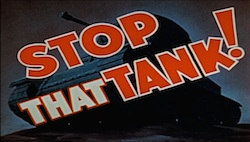
Stop That Tank! is a 22-minute 1942 instructional film created during World War II by Walt Disney Productions for the Directorate of Military Training, The Department of National Defence and the National Film Board of Canada (NFB). Its purpose, akin to "edutainment", was to instruct Canadian soldiers in the handling and care of the Boys Mk.1 Anti-tank rifle for use in combat against Nazi tanks. The film presented information in an entertaining manner as well as providing an anti-Nazi propaganda message.
Chemical weapons have been a part of warfare in most societies for centuries. However, their usage has been extremely controversial since the 20th century.
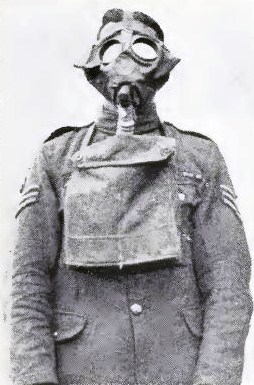
The Small Box Respirator (SBR) was a British gas mask of the First World War and a successor to the Large Box Respirator. In late 1916, the respirator was introduced by the British with the aim to provide reliable protection against chlorine and phosgene gases. The respirator offered a first line of defence against these. The use of mustard gas, was begun by the Germans; a vesicant ("blister agent") that burnt the skin of individuals that were exposed to it. Death rates were high with exposure to both the mixed phosgene, chlorine and mustard gas, however with soldiers having readily available access to the small box respirator, death rates had lowered significantly. Light and reasonably fitting, the respirator was a key piece of equipment to protect soldiers on the battlefield.